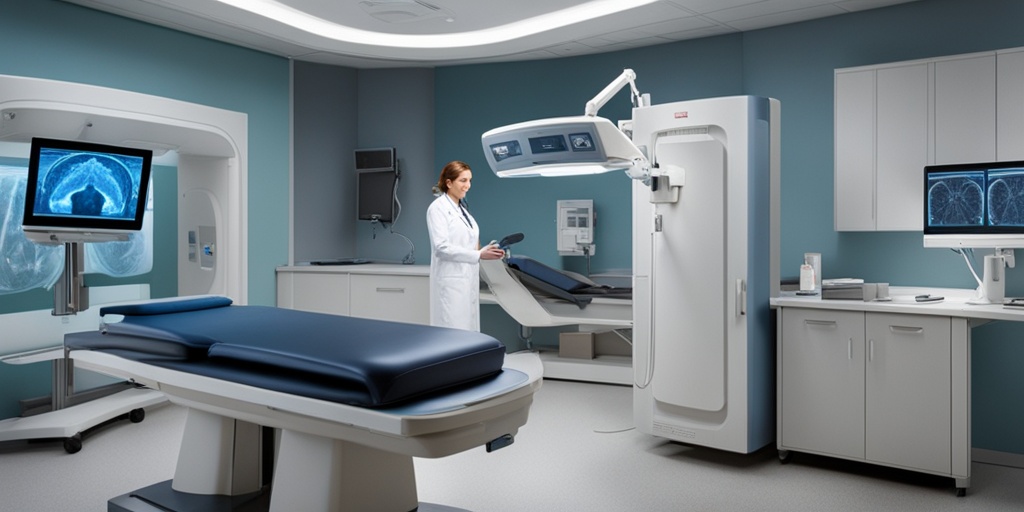What Is a Transient Ischemic Attack?
A Transient Ischemic Attack, commonly referred to as a TIA or “mini-stroke,” is a temporary blockage of blood flow to the brain. This interruption in blood flow can cause symptoms similar to those of a stroke, but they are usually short-lived and reversible. TIAs are often a warning sign that a person is at risk of having a full-blown stroke in the future.
What Causes a TIA?
The primary cause of a TIA is a blockage or reduction in blood flow to the brain, which can occur due to various factors. Some common causes include:
- Blood clots: A blood clot can form in an artery that supplies blood to the brain, temporarily blocking blood flow.
- Atherosclerosis: The buildup of plaque in the arteries can narrow or block them, reducing blood flow to the brain.
- High blood pressure: Uncontrolled high blood pressure can damage blood vessels and increase the risk of a TIA.
- Diabetes: People with diabetes are at a higher risk of developing atherosclerosis and high blood pressure, which can lead to a TIA.
Why Is It Important to Take TIAs Seriously?
TIAs are often a warning sign that a person is at risk of having a full-blown stroke in the future. In fact, up to 15% of people who experience a TIA will have a stroke within three months. It’s essential to take TIAs seriously and seek medical attention immediately if you or someone you know is experiencing symptoms.
TIA Symptoms and Warning Signs
The symptoms of a TIA are similar to those of a stroke, but they are usually temporary and reversible. If you experience any of the following symptoms, seek medical attention immediately:
Common TIA Symptoms:
- Sudden weakness or numbness in the face, arm, or leg
- Sudden confusion or trouble speaking
- Sudden trouble seeing in one or both eyes
- Sudden severe headache with no known cause
- Dizziness or loss of balance
- Sudden nausea or vomiting
Remember, the acronym F.A.S.T. can help you identify the warning signs of a TIA or stroke:
- F – Face: Ask the person to smile. Does one side of their face droop?
- A – Arm: Ask the person to raise both arms. Does one arm drift downward?
- S – Speech: Ask the person to repeat a simple sentence. Is their speech slurred or difficult to understand?
- T – Time: Time is of the essence. If the person shows any of these symptoms, call for medical help immediately.
If you’re concerned about your risk of having a TIA or stroke, consult with your healthcare provider. They can help you identify your risk factors and develop a plan to reduce your risk. Additionally, resources like Yesil Health AI can provide you with evidence-based health answers and guidance on managing your health.
Remember, a TIA is a warning sign that should not be ignored. Seek medical attention immediately if you experience any symptoms, and take steps to reduce your risk of having a stroke in the future. ⏰

TIA Causes and Risk Factors
A Transient Ischemic Attack (TIA) is often referred to as a “mini-stroke” because it shares similar symptoms with a stroke, but the effects are temporary and reversible. However, it’s essential to understand that a TIA is a warning sign that a person is at risk of having a full-blown stroke in the future. So, what causes a TIA, and who is at risk?
What Causes a TIA?
A TIA occurs when the blood flow to the brain is temporarily blocked, causing a lack of oxygen and nutrients to the brain cells. This blockage can be due to various reasons, including:
- Blood clots: A blood clot can form in the arteries that supply blood to the brain, blocking the flow of blood and oxygen.
- Atherosclerosis: The buildup of plaque in the arteries can narrow them, reducing blood flow to the brain.
- High blood pressure: Uncontrolled high blood pressure can damage the blood vessels, making them more susceptible to blockages.
- Diabetes: High blood sugar levels can damage the blood vessels and increase the risk of a TIA.
- Smoking: Smoking damages the blood vessels and increases the risk of a TIA.
- Heart disease: Conditions like atrial fibrillation, heart valve problems, and coronary artery disease can increase the risk of a TIA.
Risk Factors for a TIA
Certain factors can increase a person’s risk of having a TIA. These include:
- Age: The risk of a TIA increases with age, especially after 55.
- Family history: A family history of TIAs or strokes can increase a person’s risk.
- Race: African Americans are more likely to have a TIA than Caucasians.
- High cholesterol: High levels of low-density lipoprotein (LDL) cholesterol can increase the risk of a TIA.
- Obesity: Being overweight or obese can increase the risk of a TIA.
- Lack of exercise: A sedentary lifestyle can increase the risk of a TIA.
It’s essential to understand that a TIA is a warning sign, and taking steps to reduce the risk factors can help prevent a full-blown stroke. If you or a loved one has experienced a TIA, it’s crucial to seek medical attention immediately to reduce the risk of future strokes. 💊
Diagnosing a Transient Ischemic Attack
Diagnosing a TIA can be challenging, as the symptoms are temporary and may have resolved by the time medical attention is sought. However, a prompt and accurate diagnosis is crucial to reduce the risk of future strokes. So, how do doctors diagnose a TIA?
Medical History and Physical Exam
The diagnosis of a TIA typically begins with a thorough medical history and physical exam. The doctor will ask questions about the symptoms, such as:
- When did the symptoms start?
- How long did the symptoms last?
- What were the symptoms?
The doctor will also perform a physical exam to check for signs of a TIA, such as:
- Weakness or numbness in the face, arm, or leg
- Difficulty speaking or understanding speech
- Vision changes or blindness
- Dizziness or loss of balance
Imaging Tests
Imaging tests are used to rule out other conditions that may be causing the symptoms. These tests may include:
- Computed Tomography (CT) scan: A CT scan uses X-rays to produce images of the brain.
- Magnetic Resonance Imaging (MRI): An MRI uses a strong magnetic field and radio waves to produce detailed images of the brain.
- Carotid ultrasound: This test uses high-frequency sound waves to produce images of the carotid arteries in the neck.
These tests can help identify any blockages or narrowing of the blood vessels that may have caused the TIA. 💻
A prompt and accurate diagnosis of a TIA is crucial to reduce the risk of future strokes. If you or a loved one has experienced a TIA, it’s essential to seek medical attention immediately. Don’t delay – every minute counts! ⏰

TIA Treatment and Management
When it comes to TIA (Transient Ischemic Attack) treatment and management, the primary goal is to reduce the risk of a future stroke or another TIA. Since TIAs are often a warning sign for a potential stroke, prompt medical attention is crucial. In this section, we’ll explore the various treatment options and management strategies for TIA patients.
Emergency Medical Care
During a TIA, it’s essential to seek immediate medical attention. In the emergency room, doctors will typically perform a series of tests to rule out other conditions that may be causing the symptoms. These tests may include:
- Electrocardiogram (ECG or EKG) to check for heart rhythm irregularities
- Imaging tests, such as CT or MRI scans, to rule out bleeding in the brain
- Blood tests to check for signs of infection or inflammation
Medications
Once the diagnosis is confirmed, doctors may prescribe medications to help manage the condition and reduce the risk of a future stroke. These medications may include:
- Anti-platelet agents, such as aspirin, to prevent blood clots from forming
- Anticoagulants, such as warfarin, to thin the blood and reduce clotting
- Statins, to lower cholesterol levels and reduce the risk of heart disease
- Blood pressure medications, to control high blood pressure
Lifestyle Changes
In addition to medications, making lifestyle changes can significantly reduce the risk of a future stroke or TIA. These changes may include:
- Quitting smoking, as smoking is a significant risk factor for stroke and heart disease
- Exercising regularly, to improve overall cardiovascular health
- Eating a healthy diet, rich in fruits, vegetables, and whole grains
- Managing stress, through techniques like meditation or yoga
TIA vs Stroke: What’s the Difference?
TIAs and strokes are often referred to as “brain attacks,” but they have distinct differences in terms of symptoms, duration, and impact on the brain. Let’s explore the key differences between TIA and stroke:
Symptoms
The symptoms of TIA and stroke are similar, but the duration and severity differ. TIA symptoms typically last for a few minutes to an hour, while stroke symptoms can persist for hours, days, or even weeks. Common symptoms of both TIA and stroke include:
- Sudden weakness or numbness in the face, arm, or leg
- Sudden confusion or trouble speaking
- Sudden trouble seeing in one or both eyes
- Sudden severe headache with no known cause
Duration
The duration of TIA symptoms is typically shorter than stroke symptoms. TIAs usually last for:
- Less than 24 hours
- Often less than an hour
- Sometimes only a few minutes
In contrast, stroke symptoms can persist for:
- Hours
- Days
- Weeks
- Months
- Even years
Impact on the Brain
TIAs do not cause permanent brain damage, as the blockage is temporary and resolves on its own. However, strokes can cause permanent brain damage, leading to long-term disability or even death. The impact of a stroke on the brain depends on the location and severity of the blockage.
Remember, if you or someone you know is experiencing symptoms of a TIA or stroke, call emergency services immediately. Prompt medical attention can significantly reduce the risk of long-term damage and improve outcomes. 🚑💊

Recovering from a Transient Ischemic Attack
Experiencing a Transient Ischemic Attack (TIA) can be a frightening and overwhelming experience. Also known as a “mini-stroke,” a TIA occurs when the blood flow to the brain is temporarily blocked, causing symptoms similar to a stroke. Fortunately, most people can make a full recovery from a TIA, but it’s essential to take the necessary steps to reduce the risk of future attacks and strokes.
Immediate Care and Treatment
After a TIA, it’s crucial to seek immediate medical attention. Your healthcare provider will perform a series of tests, including imaging studies and blood work, to determine the underlying cause of the attack. Treatment typically involves addressing any underlying conditions, such as high blood pressure, high cholesterol, or diabetes, that may have contributed to the TIA.
In some cases, your healthcare provider may prescribe medications to help manage symptoms and reduce the risk of future attacks. These may include:
- Anti-platelet medications, such as aspirin, to prevent blood clots
- Anticoagulant medications, such as warfarin, to thin the blood
- Medications to control high blood pressure, high cholesterol, or diabetes
Rehabilitation and Lifestyle Changes
In addition to medical treatment, making lifestyle changes can help reduce the risk of future TIAs and strokes. This may include:
- Quitting smoking, as smoking significantly increases the risk of stroke and heart disease
- Increasing physical activity, such as walking or swimming, to improve overall health and reduce blood pressure
- Eating a healthy diet, rich in fruits, vegetables, and whole grains, to help manage blood pressure and cholesterol levels
- Managing stress, through techniques such as meditation or yoga, to reduce blood pressure and anxiety
Rehabilitation may also involve working with a healthcare team to address any physical or cognitive impairments resulting from the TIA. This may include physical therapy, occupational therapy, or speech therapy.
Preventing Future TIAs and Strokes
While recovering from a TIA, it’s essential to take steps to prevent future attacks and strokes. This involves addressing underlying conditions, making lifestyle changes, and working closely with your healthcare provider.
Identifying and Managing Risk Factors
Several factors can increase the risk of future TIAs and strokes, including:
- High blood pressure, which can damage blood vessels and increase the risk of stroke
- High cholesterol, which can lead to the buildup of plaque in blood vessels
- Diabetes, which can damage blood vessels and increase the risk of stroke
- Obesity, which can increase the risk of high blood pressure, high cholesterol, and diabetes
- Sleep apnea, which can increase the risk of high blood pressure and stroke
Working with your healthcare provider to manage these risk factors can significantly reduce the risk of future TIAs and strokes.
Regular Check-Ups and Monitoring
Regular check-ups with your healthcare provider are crucial for monitoring your condition and making any necessary adjustments to your treatment plan. This may involve:
- Regular blood pressure and cholesterol checks
- Monitoring blood sugar levels, if you have diabetes
- Regular imaging studies, such as MRIs or CT scans, to monitor blood vessel health
By working closely with your healthcare provider and making the necessary lifestyle changes, you can reduce the risk of future TIAs and strokes, and improve your overall health and well-being. 💪

Frequently Asked Questions about TIA (Transient Ischemic Attack)
What is TIA (Transient Ischemic Attack)?
A TIA, also known as a “mini-stroke,” is a temporary blockage of a blood vessel in the brain that lasts for a short period, usually less than 24 hours. It is a warning sign that a person is at risk of having a full-blown stroke.
What are the symptoms of TIA (Transient Ischemic Attack)?
The symptoms of TIA are similar to those of a stroke, but they are temporary and reversible. They may include:
- Numbness or weakness in the face, arm, or leg
- Difficulty speaking or understanding speech
- Trouble seeing in one or both eyes
- Dizziness or loss of balance
- Severe headache
What is the treatment for TIA (Transient Ischemic Attack)?
The treatment for TIA usually involves addressing the underlying causes, such as high blood pressure, high cholesterol, or heart disease. Medications may be prescribed to prevent blood clots, lower blood pressure, and reduce the risk of another TIA or stroke.
How is TIA (Transient Ischemic Attack) diagnosed?
TIA is diagnosed based on a combination of medical history, physical examination, and diagnostic tests, such as:
- CT or MRI scans to rule out bleeding in the brain
- Electrocardiogram (ECG) to check for heart rhythm problems
- Carotid ultrasound to check for blockages in the neck arteries
- Transcranial Doppler to check for blockages in the brain arteries
What is the ICD-10 code for TIA (Transient Ischemic Attack)?
The ICD-10 code for TIA is G45.9.
Can I get life insurance if I have a history of TIA (Transient Ischemic Attack)?
It may be more challenging to get life insurance if you have a history of TIA, but it’s not impossible. Insurance companies will assess your risk based on your medical history and may offer you a policy with higher premiums or exclusions.
What is the prognosis for TIA (Transient Ischemic Attack)?
The prognosis for TIA is generally good, but it depends on the underlying causes and the promptness of treatment. With proper medical care, most people can recover fully from a TIA. However, it’s essential to take steps to reduce the risk of another TIA or stroke.
How can I reduce the risk of TIA (Transient Ischemic Attack)?
To reduce the risk of TIA, it’s essential to:
- Control high blood pressure and high cholesterol
- Quit smoking
- Maintain a healthy weight
- Exercise regularly
- Eat a balanced diet
- Manage stress
Remember, a TIA is a warning sign that you’re at risk of having a stroke. Take it seriously and take action to reduce your risk! 💡




